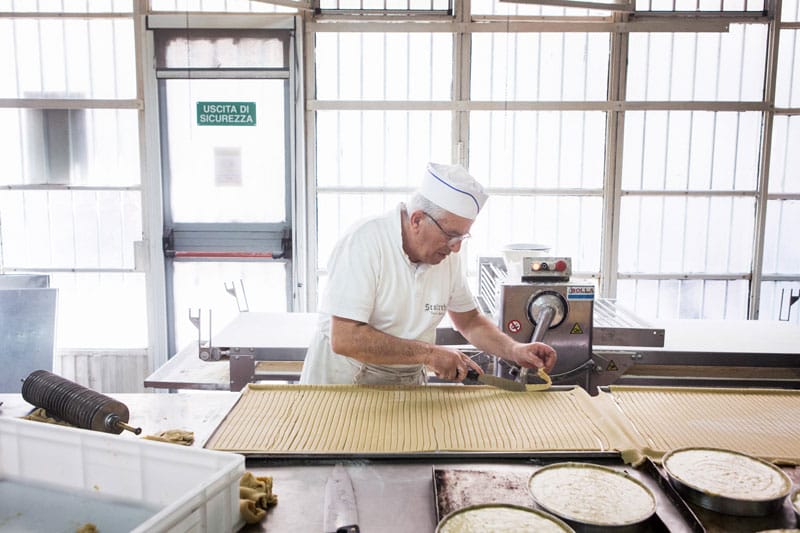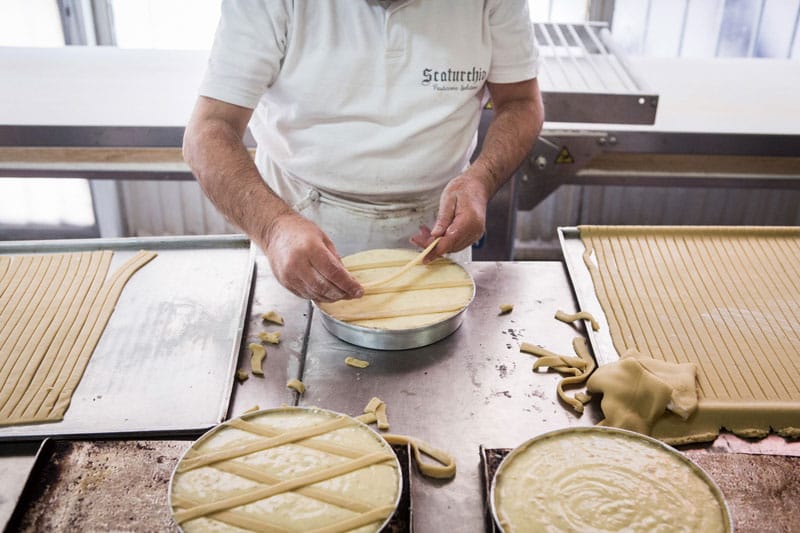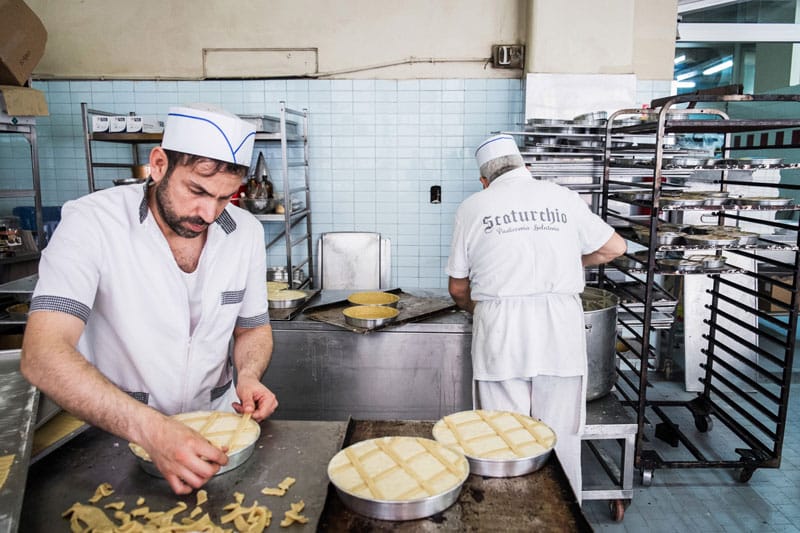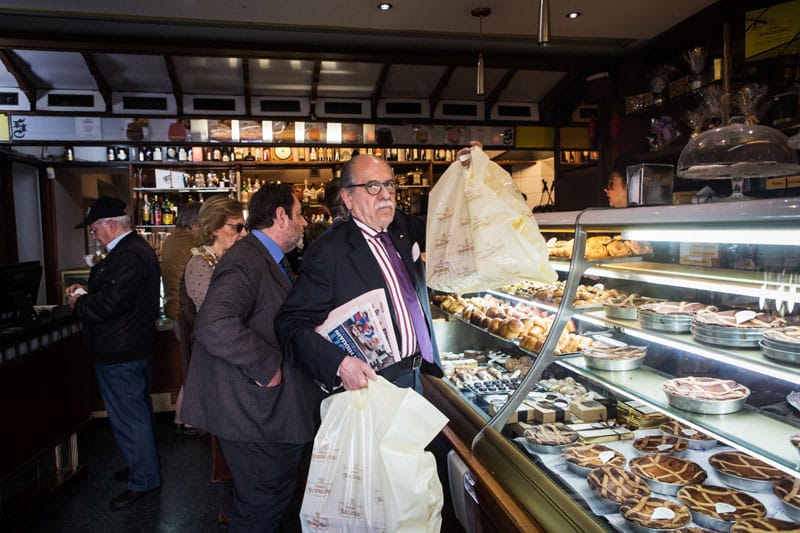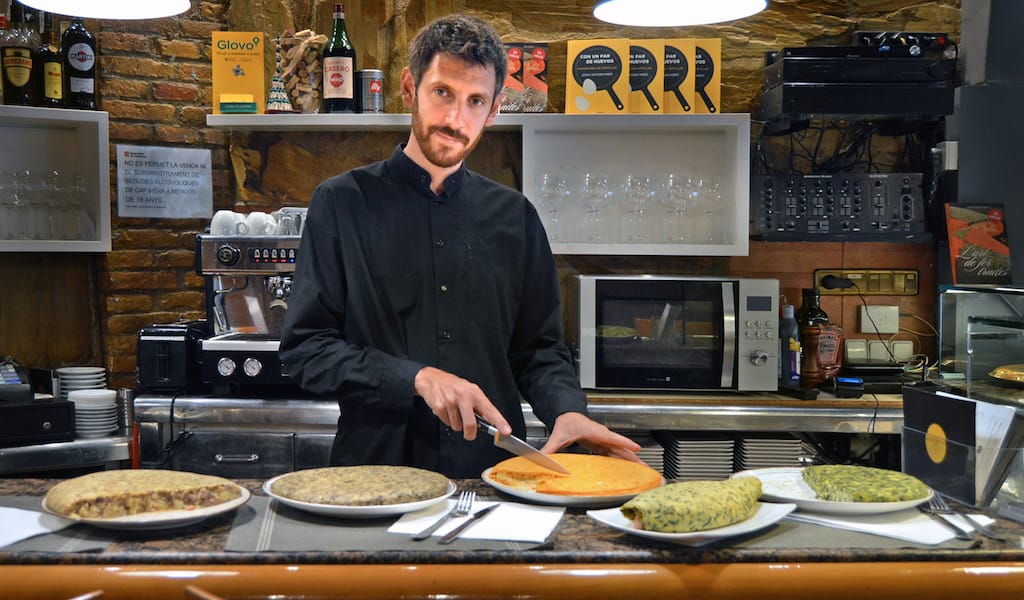Like the Proustian madeleine, sweets can stir up all kinds of feelings in the minds of those who eat them. In Naples, struffoli (small, round doughnuts glazed with honey) and cassata (sponge cake with ricotta and candied fruit) speak of Christmas, while chiacchiere (sugar-dusted fritters) and sanguinaccio (literally “blood pudding,” but actually made of chocolate) bring to mind Carnevale. And then there’s pastiera, whose very scent and taste make us think of Easter and spring.
These days, pastiera can be made all year long, not only when the wheat has just sprouted, as was the case for our ancestors. Yet, when Easter approaches, all Neapolitans dream of this cake.
Everyone has his or her own beliefs about the “true” recipe for pastiera and the superiority of the pastiera della mamma. “Look, you have mistaken memories,” my wife often says to me. “Your mom’s was terrible.” She’s wrong of course; my mother’s pastiera was the best.
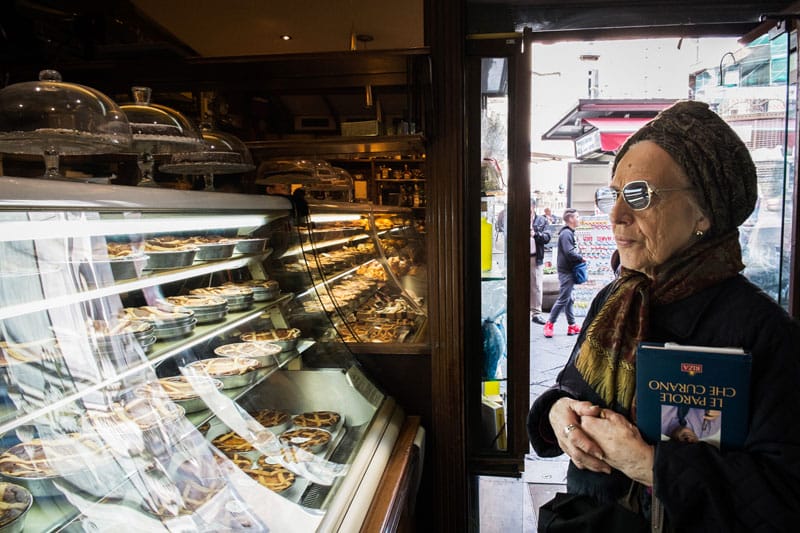
Pastiera is the queen of Neapolitan sweets, yet its composition is relatively simple. Shortcrust encases a filling of ricotta cheese, eggs, boiled grains of wheat, custard, candied fruit and aromatics, including orange flower water. All of this is topped with a lattice of the same pastry.
There are those who prepare this tart with ground wheat because they don’t like the grain whole, still others who won’t add candied citron because they say no one likes it, and beyond that, there are some who add a thick custard, known as pastiera Starace, after the confectioner who came up with the idea.
As with almost all the great Neapolitan pastries, pastiera was born in a convent – specifically, the Convent of San Gregorio Armeno in Naples’s centro storico. The nuns there were the first to bake hundreds of pastiere for the Neapolitan bourgeoisie. And that’s why the best pastiera is still to be found around the monastery. For me, the modern benchmark is the version made by the pasticceria Scaturchio (established in 1905) in Piazza San Domenico Maggiore.
And, as with many great pastries, this one has a legend associated with it. Here’s how it goes: Maria Cristina of Savoy, wife of King Ferdinand II, who ruled Sicily and southern Italy in the first half of the 19th century, was nicknamed “the Queen who never smiles.” One Easter, the court chef prepared pastiera for her. The Queen tried just tried a little bit and was so enraptured that she let out a beautiful smile in public. The king, like all husbands who complain about their sad wives, said: “We needed a pastiera to make my wife smile. Now I have to wait until next Easter to see her smile again.”
For the sake of your own smile, when ordering this sweet, be sure you’re asking for a slice of pastiera and not pastierina, which is made from the same dough but is a different sweet altogether. A pastry shop that has only pastierina might tell you they’re the same: OK, but true pastiera is enjoyed in large slices.
Pastiera is the very symbol of inclusiveness and hospitality, virtues in which the city of Naples has always excelled: the Italian wheat and ricotta play host to citron, which comes from across the Mediterranean, cinnamon from Sri Lanka, vanilla from Mexico – ingredients from all over the world are welcomed with open arms by the orange flowers of the Amalfi Coast.
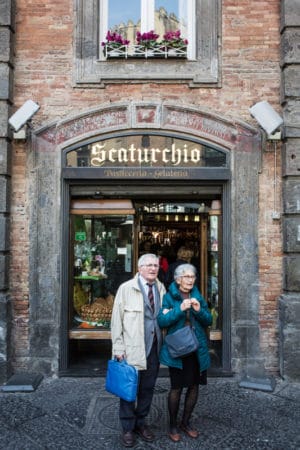 That lattice on top is essential because it keeps the filling from rising too much during baking. It symbolizes the fisherman’s net and the offerings their wives made while they were at sea – and thus also symbolizes this place’s strong ties to seafaring life. The ricotta and wheat signify wealth and fecundity, eggs are a symbol of birth and orange flower of the spring’s arrival.
That lattice on top is essential because it keeps the filling from rising too much during baking. It symbolizes the fisherman’s net and the offerings their wives made while they were at sea – and thus also symbolizes this place’s strong ties to seafaring life. The ricotta and wheat signify wealth and fecundity, eggs are a symbol of birth and orange flower of the spring’s arrival.
When I speak of pastiera, I speak always of Neapolitan pastiera. Making it is an old tradition passed down from one generation to the next. Allow me to be a little politically incorrect then: to prepare a sacred sweet like pastiera you must be a child of Vesuvius. Only Neapolitan chefs are allowed to make the real thing. There, I said it.
This story was originally published on April 12, 2017.
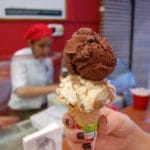 June 30, 2016 Cool Cariocas
June 30, 2016 Cool Cariocas
Carioca summer culture is dictated by the heat. It’s courteous to ask guests if they’d […] Posted in Rio June 5, 2017 Queens: A Street Food Paradise
June 5, 2017 Queens: A Street Food Paradise
On our culinary walk in the borough, you'll quickly realize that Queens is not just a […] Posted in Queens August 14, 2019 Les Truites
August 14, 2019 Les Truites
If anything in recent history has bonded Spanish hearts, it was neither politics, […] Posted in Barcelona
Published on April 07, 2023
Related stories
June 30, 2016
RioCarioca summer culture is dictated by the heat. It’s courteous to ask guests if they’d like to take a quick shower upon arriving at your home (because everyone takes multiple showers a day in the summer). Beer at parties must be estupidamente gelado. Movie theaters sell out even for so-so films because the air conditioning inside is delícia. This…
June 5, 2017
QueensOn our culinary walk in the borough, you'll quickly realize that Queens is not just a paradise for different ethnic cuisine but also for street food! Approach with an empty stomach.
August 14, 2019
BarcelonaIf anything in recent history has bonded Spanish hearts, it was neither politics, language, flags nor even TV. It was the tortilla de patatas, the iconic potato omelet. In every house, bar and restaurant, the tortilla de patates is always treated with intimacy and respect, like some sort of communal great-great-grandmother. And in every Spanish…










































